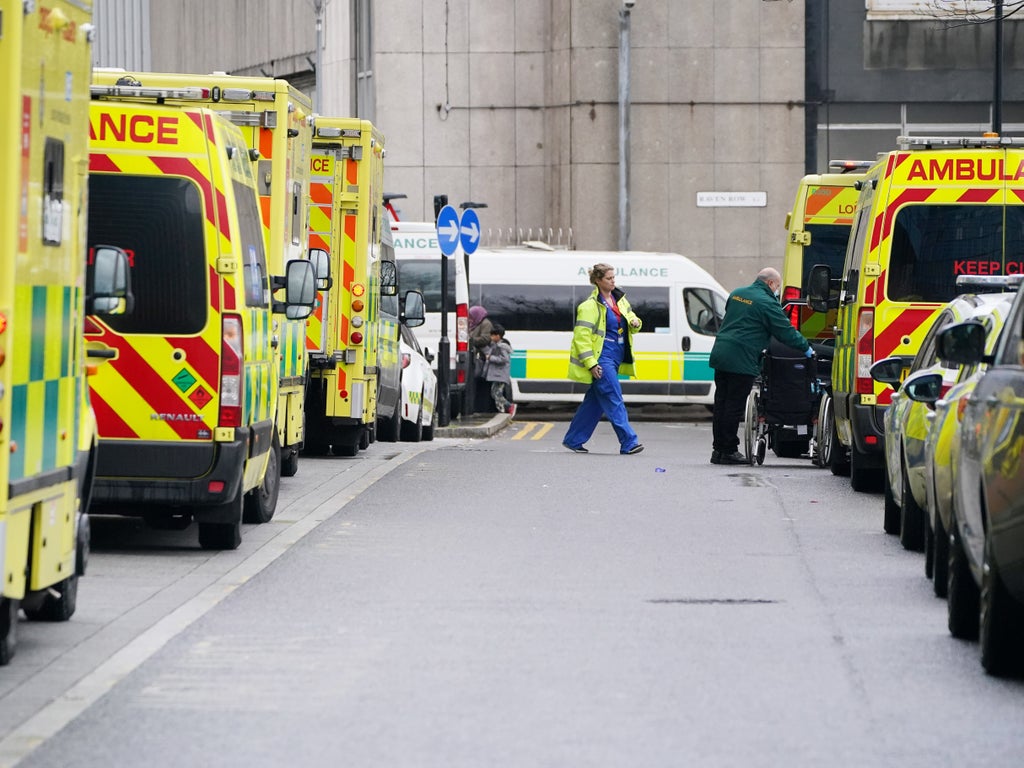
Ambulance response times are putting lives at risk, medics have warned after a schoolgirl with a fractured skull was told it would take 10 hours for help to arrive.
It recently emerged wait times for ambulances in England dealing with “life-threatening” callouts are at their highest level on record.
In March, the average response time for ambulances dealing with the most urgent incidents was nine minutes and 35 seconds – significantly above the seven-minute national target.
This was up from eight minutes and 51 seconds in February and is the longest average since current records began in August 2017.
All 10 of England’s major ambulance trusts are currently at the highest state of alert, the BBC has found, indicating they are under severe or extreme pressure.
One paramedic told the BBC those kinds of waits were having a “dangerous impact” on patient safety.
“I’m meant to care for a patient who had been in the back of my ambulance for 14 hours, but nobody has ever really taught me how to look after someone like that,” he said.
While Dr Katherine Henderson, an A&E consultant and president of the Royal College of Emergency Medicine, said: “The fact that we are struggling to guarantee somebody an ambulance in a timely way moves us into a whole new territory as a patient safety issue”.
In October, nine-year-old girl Willow Clark’s parents were told they would have to wait 10 hours for an ambulance to turn up after she fell off her bike in the Hertfordshire countryside, cracking her helmet and resulting in a fractured skull and nine-inch cut to her leg.
Her mother Sam told said they were 20 minutes away from home so some passers-by called 999 and explained Willow had a severe head injury and badly hurt leg.
However they were told it would be a 10-hour wait for an ambulance and advised to take the schoolgirl to hospital themselves, she said.
“It’s the first time I’ve ever had to phone an ambulance and I was so disappointed,” she told the BBC. “When we really needed it, help just wasn’t there and it should have been.”
The mother later discovered her daughter had been classified as an “urgent” category three case which meant the ambulance should have arrived within 120 minutes.
East of England Ambulance Service later apologised and said Willow actually should have been dealt with as a more critical category two case.
Despite this, the NHS did not record Willow’s case as a serious safety incident as it must lead to potentially long-term harm or death to meet the threshold.
The chief executive of Gloucestershire Hospitals Foundation Trust revealed she had her husband drive her to A&E when she suffered a suspected stroke because of her own concern over ambulance delays.

Deborah Lee said she had now recovered but warned urgent action was needed from the government.
Reflecting on the event, she said: “I can’t get one thing out of my head: What if my husband hadn’t been there and my daughter had called for an ambulance and I’d been put in the Cat 2 ‘stack’?”
Ms Lee, who has more than 30 years of experience in the NHS, said her husband had heard her “lamenting” ambulance delays so chose to drive her to A&E when she displayed symptoms of a stroke rather than call 999.
BBC research showed there were 551 serious safety reports filed by ambulance staff in England between March 2021 and February 2022, up from 312 in the same period before the pandemic.
Among these, there were 201 unintended or unexpected deaths, up from 78 in 2019/2020.
Volunteers will drive ambulance cars for some patients in need as part of a pilot scheme launched this month.
London Ambulance Service said trained volunteers already respond to 999 calls in their own car alongside ambulances.
But it confirmed such volunteers would now be deployed in ambulance cars for lower category calls in some instances.
Volunteers are equipped, trained to use defibrillators and support LAS at life-threatening emergency calls in their area, the service said.
An NHS spokesperson said: “The safety of patients is our absolute priority and it is a good thing that more staff are being encouraged report all incidents to prevent help prevent repetition.
“There’s no doubt the last few months have been some of the toughest ever for NHS staff, with ambulances responding to the highest number of 999 calls on record over the past year, while more than a tenth of all hospital beds have been filled by people fit to be discharged to services such as social care providers.
“Hospitals, ambulance trusts and social care providers are working closely together to see patients as quickly as possible as well as ensuring patients leave hospital as soon as they are fit to do so.
As ever, if you need help please come forward for the care you need through NHS 111 online, and if it’s an emergency dial 999 or go to your nearest A&E.”







